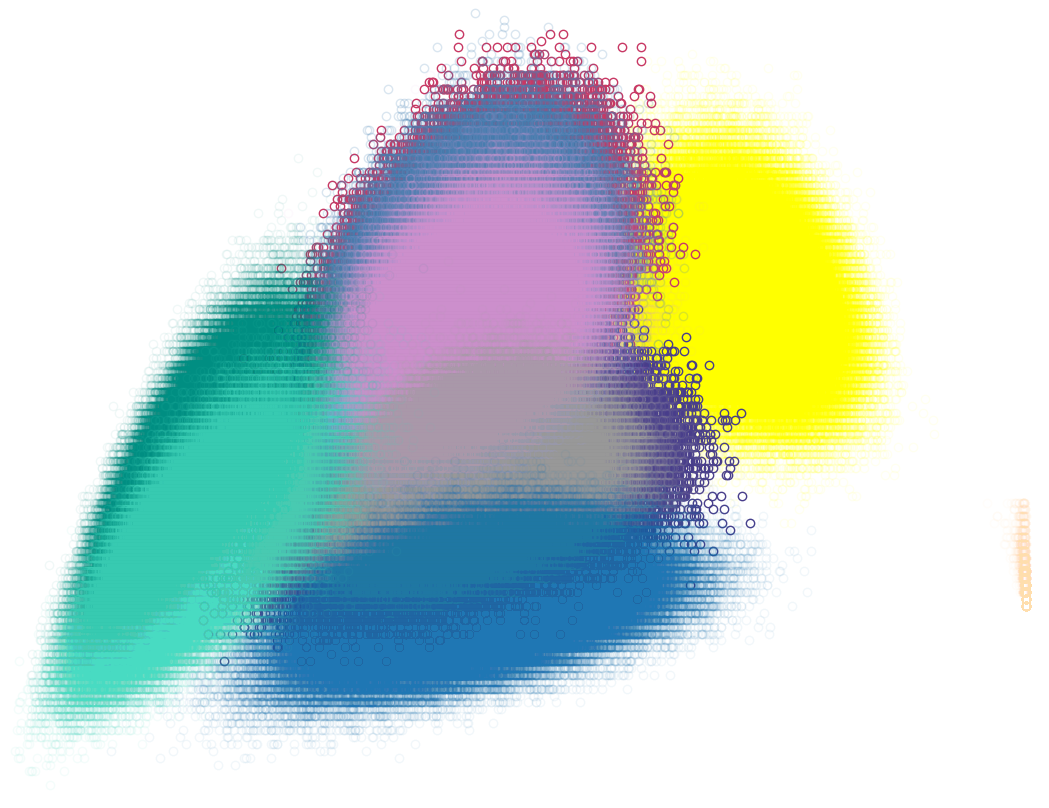SegcM for Multiple Testers | DNA Science
Improve relationship predictions by including the kits of two siblings
Using cMs and the # of segments provides much better relationship predictions than from cMs alone. Now you can get improved predictions by using the kits of two siblings. This is the first relationship predictor that provides updated probabilities for a second sibling. The tools at this site take into account differences between maternal and paternal relationships and show that close genealogical relationships considered to be in the same group are sometimes quite different.
Please enter the shared cMs and # of segments that both you and your sibling share with an unknown DNA match
cMs = centiMorgans, segs. = segments, 2C = 2nd cousin, 2C1R = 2nd cousin once removed. Relationships not listed in the table above do not have a 0% probability; they have a < 0.1% or ~0% probability under the following assumptions: no endogamy, double relationships, or pedigree collapse.
For predictions for just one person and their unknown match, click here. You can find mobile apps. for relationship predictions in the Apple Store and on Google Play. A double cousin predictor is also available.
Your submissions to this new DNA match survey are appreciated. In fact, they played a large role in improving the accuracy of this tool
This tool is currently designed for two full-siblings and their unknown DNA match, but it will work just as well for half-siblings in most cases. Exceptions include when the unknown match is a full-sibling to one, or a full-sibling's descendant, or a descendant of one of the half-siblings. When two different relationships are listed in the probability table, eg. "Child, Niece/Nephew," the first one is for the sibling who shares more with the unknown match and the second one is for the lower cM sibling. Please don't enter values for 1st cousins or any other relationship besides siblings, even if they're in the same generation.
*Parent/child and full-sibling relationships are easy to distinguish from each other or any other relationships. Parent/child relationships consist of a half-identical region (HIR) match across the whole length of the genome. Full-siblings share 12.5% fully-identical regions (FIR), on average, while parent/child and half-sibling relationships typically share 0 FIRs. Genotyping sites will take this into account in their relationship predictions. You can generally trust the label "Sibling" (meaning full-sibling) at the original testing site.
A great advantage of this tool, other than the accuracy of the data, is that it treats close relatives as not being in the same group because the probability curves are significantly different. Any of the probabilities shown above are only relative to the other relationships listed, therefore they’re only meaningful in comparison to the other relationships.
This tool is designed for DNA matches at Ancestry, FTDNA, GEDmatch, or MyHeritage. These sites only show half-identical region (HIR) DNA rather than the full amount of matching. 23andMe is different in that it uses the total IBD DNA sharing metric, including X-DNA when applicable. Predictions here will be accurate for 23andMe the vast majority of the time, but will have reduced accuracy for 23andMe matches who share X-DNA or have a double relationship. Full-siblings are a type of double relationship, so the tool may not work when the unknown match is a full-sibling at 23andMe. Please subtract any X-DNA from cM values for 23andMe. Including X-DNA in the total is better than ignoring the X-DNA amount, but this tool isn't designed for that yet.
Population weights are applied to most relationships in this tool and genotyping errors are accounted for. Population weights increase the probabilities for more distant cousins because a person typically has about 5x more cousins from each generation further back. This increases the probability that an unknown match is a more distant cousin for a given cM value.
Probabilities are included for relationships as far back as 14th cousins. The most advanced science shows that relationships more distant than that almost never share DNA. For distant relatives, there's much less certainty about the genealogical relationship for your DNA matches. Not only are very low cM values difficult to assign to a recent ancestor, but segments of 20 cMs or 30 cMs may be on pile-up regions and therefore come from very distant ancestors.
For more information about this tool, click here. Or check out the first science article to describe a methodology used for relationship predictions.
The data used for these predictions came from Caballero et al. (2019). In this case, the refined genetic map of Bhérer et al. (2017) was used as well as the crossover interference parameters of Campbell et al. (2015).
The methods used here result in probabilities that are much more accurate than when multiplying probabilities together. Studies have shown that, for tools that multiply probabilities, adding a sibling to the analysis actually decreases the probability assigned to the correct relationship.
If you're one of the many people who have benefited from DNA-Science predictions for the past two years, don't keep it a secret. There are many other people who haven't been so fortunate. Help answer people's questions by showing them the most accurate probabilities. They deserve to see the correct relationship at the top of the list.
DNA-Sci is also the original home of DNA coverage calculations, since June of 2019.

